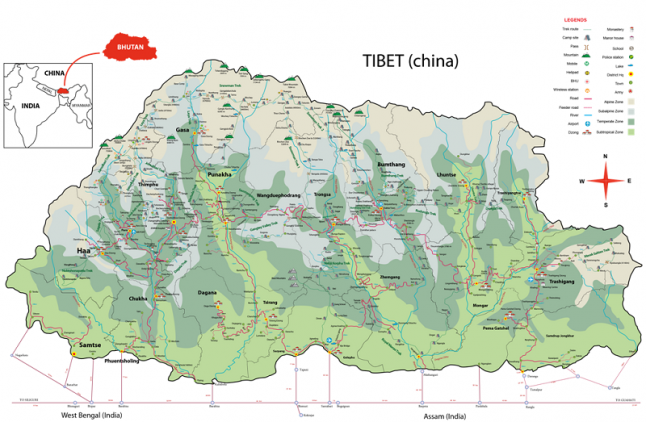About Bhutan
Bhutan, History and Facts
Archaeological evidence suggests that Bhutan was inhabited by nomadic herders as early as 2000-1500 BC. Although the destruction of original documents in fires and earthquakes has left much of Bhutan’s ancient history obscure, a few of the scriptures that were saved from such natural disasters reveal the prominence of Buddhist tradition and mythology. Other sources rely on reports from British explorers, and on legend and folklore. Archaeological evidence suggests that Bhutan was inhabited by nomadic herders as early as 2000-1500 BC. Although the destruction of original documents in fires and earthquakes has left much of Bhutan’s ancient history obscure, a few of the scriptures that were saved from such natural disasters reveal the prominence of Buddhist tradition and mythology. Other sources rely on reports from British explorers, and on legend and folklore.

Recorded Bhutanese history dates back to the 747 AD when Guru Rimpoche first visited the country. Regarded as the second Buddha and the patron saint of Bhutan, he introduced the Buddhist religion in the country, providing a sense of cohesion during the middle ages.
Until the early 17th century, Bhutan was a cluster of fragmented provinces constantly at odds with each other. It was Shabdrung Ngawang Namgyel, a great spiritual personality and leader who brought an end to warring factions and unified the country into one nation, establishing a theocracy in 1652 and introducing a code of law. In the process of crushing several foreign invasions, mainly from Tibet, he initiated the building of many fortresses called Dzongs, which to this day, serve as centres of administration in the country.
The theocracy established by Shabdrung endured until 1907 when Ugyen Wangchuck was elected as the first hereditary king of Bhutan by popular consensus. Jigme Wangchuck succeeded him and ruled the country from 1926 to 1952. Jigme Dorji Wangchuck, also known as the father of Modern Bhutan, was king from 1952 to 1972. The fourth king Jigme Singye Wangchuck came to the throne in 1972 until 2006. The present king is Jigme Khesar Namgyal Wangchuck.
Facts about Bhutan
Until recently, the tiny Asian kingdom of Bhutan remained tucked away in total isolation from the rest of the world. That segregation helped to preserve its deep Buddhist traditions, importance of the family and pristine landscapes. It’s also made it a fascinating country to study.
Anyone found guilty of killing a highly endangered and culturally sacred black-necked crane could be sentenced to life in prison.
Bhutan is one of the last countries in the world to introduce television to its people. The government lifted a ban on TV—and on the Internet—only 11 years ago.
Location: Southern slope of eastern Himalayas. North Longitude 88 45′ – 92 10′ East
Latitude: 26 45′ – 28 15′ North
Area: 38,394 Sq. Kms
Capital: Thimphu
Population: 683,409 (2009)
Climate: Three distinct climate zones- Hot and humid Souther belt, Cool temperate- Central Zone, and Alpine northern region
Religion: Mahayana Buddhism and Hinduism
Language: Dzongkha is official language. English is the medium of instructions in all the schools and widely spoken and understood
Monetary Unit: 1 Ngultrum = 100 Cheltrum. US $1=Nu. 59 (changes)
Bhutan Standard Time: BST is 6 hours ahead of GMT (GMT+6)
Electricity: Voltage in use in Bhutan is of 220/AC – 50 cycles

